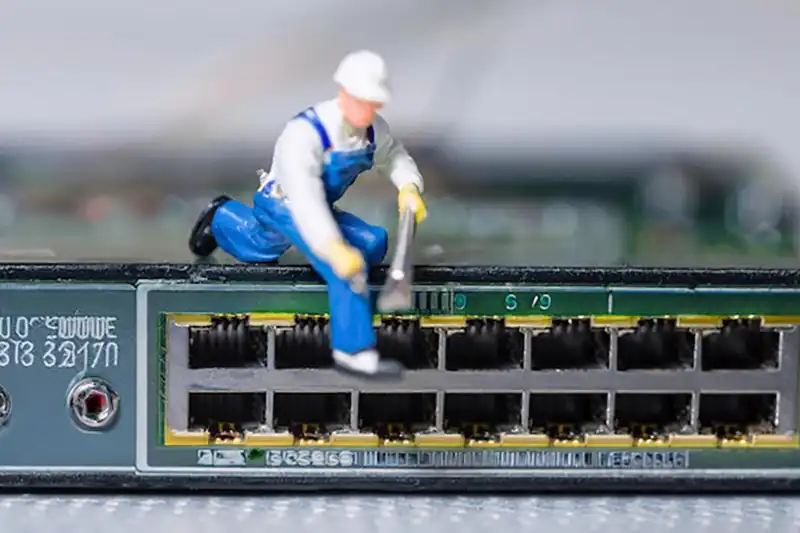MikroTik routers are a popular choice for individuals and businesses due to their flexibility and powerful features. However, like any technology, they come with their share of problems. In this article, we’ll look at common problems in MikroTik and their solutions, helping you troubleshoot and resolve issues quickly.
Introduction to MikroTik: Why It’s a Popular Choice
Sale MikroTik routers are widely known for their robust performance, affordability, and extensive customization options. Whether for home networks or large-scale business environments, MikroTik offers a versatile solution that many people rely on for routing, firewall protection, and Wi-Fi management. However, even with their reliability, common problems in MikroTik and their solutions can arise.
MikroTik routers run on RouterOS, a highly configurable operating system, which allows users to implement various network management features. While this flexibility is beneficial, it can also lead to configuration mistakes that cause problems. Understanding these issues and knowing how to solve them can improve your network performance and security.
Slow Internet Connection: Causes and How to Fix It
One of the most common issues encountered by MikroTik users is slow internet speeds. This can be due to various reasons, including improper configuration, bandwidth limitations, or network congestion.
Possible Causes:
- Incorrect Bandwidth Settings: If your bandwidth settings are improperly configured, the router may limit the internet speed.
- High Traffic Load: Multiple users or devices on the same network may saturate the available bandwidth.
- Quality of Service (QoS) Issues: Poor QoS settings can lead to inefficient bandwidth distribution.
Solutions:
- Check Queue and Bandwidth Settings: Ensure that bandwidth management settings are correctly configured under the Queue Tree and Simple Queues options in RouterOS.
- Monitor Traffic Load: Use MikroTik’s Traffic Flow tool to monitor and manage network traffic.
- Configure QoS Properly: Fine-tune your QoS settings to ensure that priority traffic (like VoIP or video streaming) gets the necessary bandwidth.
By adjusting these settings, you can often resolve issues related to slow internet speeds and optimize your network.
Router Crashing or Restarting Frequently
Another common issue is when the MikroTik router crashes or restarts unexpectedly. This can disrupt network connectivity and cause a lot of frustration.
Possible Causes:
- Overloading the Router: Running too many processes or having excessive traffic can cause a router to crash.
- Hardware Issues: A failing router or faulty power supply could be the culprit.
- Outdated RouterOS Version: Running outdated firmware can lead to system instabilities.
Solutions:
- Check Router Load: Use the Resource tab in Winbox to monitor CPU and RAM usage. If usage is too high, try reducing the number of active processes.
- Update RouterOS: Ensure your MikroTik router is running the latest RouterOS version to avoid bugs or crashes related to outdated firmware.
- Reset to Factory Settings: If the problem persists, consider resetting the router and reconfiguring it from scratch. Backup your settings before resetting.

By addressing these potential causes, you can improve the stability of your MikroTik router.
Wi-Fi Connectivity Problems: Common Issues and Fixes
Wi-Fi issues can be particularly frustrating, especially if you rely on wireless connectivity for your devices. MikroTik routers often face problems such as poor signal strength, network dropouts, and slow speeds.
Possible Causes:
- Signal Interference: Wi-Fi interference from nearby networks, microwave ovens, or other electronic devices can disrupt the connection.
- Incorrect Wireless Settings: Poor configuration of wireless settings (such as wrong channel selection or weak encryption) can lead to connectivity issues.
- Hardware Limitations: The router may not have sufficient hardware capabilities to handle high-demand wireless traffic.
Solutions:
- Change Wi-Fi Channel: In Wireless settings, choose a less congested channel to minimize interference.
- Use Higher Encryption: Ensure your wireless network is using WPA2 or higher encryption for better security and stability.
- Optimize Wireless Coverage: Adjust the placement of your MikroTik router to ensure optimal Wi-Fi coverage. You can also use external antennas for extended coverage.
These simple adjustments can significantly improve Wi-Fi performance on MikroTik routers.
Security Issues: How to Secure Your MikroTik Router
MikroTik routers are powerful, but they can be vulnerable if not properly secured. Security issues in MikroTik routersare common, especially if the router is exposed to the internet without proper protections.
Possible Causes:
- Weak Passwords: Using weak or default passwords increases the risk of unauthorized access.
- Open Ports: Leaving unnecessary ports open makes it easier for attackers to exploit vulnerabilities.
- Lack of Firewall Rules: Without a properly configured firewall, malicious traffic may reach your network.
Solutions:
- Use Strong Passwords: Always change the default password and use complex, unique passwords for administrative access.
- Close Unused Ports: Use Firewall > Filter Rules to close unnecessary ports and reduce the attack surface.
- Enable Secure Firewall Rules: Create strong rules that limit access to critical parts of your router, such as limiting access to the Winbox interface from trusted IPs only.
By securing your MikroTik router properly, you reduce the risk of unauthorized access and potential attacks.
Frequently Asked Questions (FAQ)
Q1: How can I fix slow internet speed on my MikroTik router?
A1: Check the bandwidth settings, monitor network traffic for congestion, and ensure proper QoS settings are configured to prioritize important traffic.
Q2: What can cause my MikroTik router to restart frequently?
A2: High CPU or RAM usage, outdated RouterOS versions, and hardware failure can all lead to router restarts. Monitor system resources and update the firmware regularly.
Q3: My Wi-Fi is slow. What should I check?
A3: Ensure you have selected the best Wi-Fi channel with minimal interference. Also, check encryption settings and consider adjusting the router’s placement to improve coverage.
Q4: How do I secure my MikroTik router?
A4: Change default passwords, close unused ports, and configure strong firewall rules to prevent unauthorized access and mitigate security risks.
Q5: Can I monitor traffic on my MikroTik router?
A5: Yes, MikroTik provides tools like Traffic Flow and Queue Tree to monitor and manage network traffic effectively.
In conclusion, addressing the common problems in MikroTik and their solutions is essential for ensuring the optimal performance of your router. By following the troubleshooting steps outlined in this article, you can keep your network running smoothly and securely.
For more tips and expert advice on MikroTik routers, visit Wizland.



